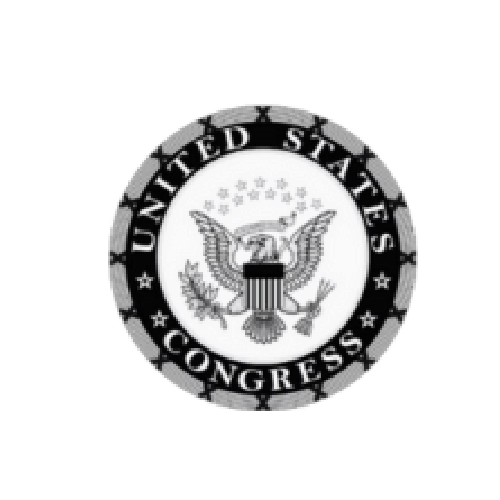Since COVID-19, interest rates have dramatically shifted, significantly impacting the multifamily investment landscape. In response to the pandemic, the Federal Reserve slashed interest rates to near-zero levels in 2020, fueling an unprecedented real estate boom. Inexpensive debt made multifamily acquisitions highly attractive, allowing investors to secure low-cost financing and maximize leverage. However, by mid-2022, inflation surged, prompting the Fed to aggressively hike rates—leading to the fastest rate increases in decades.
This rapid escalation in borrowing costs eroded purchasing power, making it more expensive to finance deals and compressing investor returns. Cap rates struggled to adjust, and transaction volume slowed as many deals no longer made sense under higher debt costs. In today’s market, fluctuating interest rates remain a major concern, creating uncertainty for investors.
To navigate this volatility, multifamily syndication companies must turn to interest rate hedges as a strategic tool to protect their investments. Using instruments like rate caps, swaps, and fixed-rate financing, multifamily syndication companies protect investor’s capital by mitigating risk, stabilizing cash flow, and maintaining profitability—despite unpredictable market conditions. In this blog, we’ll explore how these strategies work, and how they boost multifamily returns in today’s high-rate environment.
The Need for Interest Rate Hedges in Multifamily Investments
With interest rate volatility at its highest in years, multifamily investment companies face mounting challenges in maintaining profitability. The rapid rise in borrowing costs has directly impacted debt service expenses, reducing cash flow and putting pressure on returns. Deals that once made financial sense under low-rate environments now struggle to pencil out, leading to fewer transactions and increased market hesitation. The commercial real estate lending market faces mounting pressure, with $957 billion in loans set to mature in 2025. This accounts for 20% of the $4.8 trillion in outstanding CRE mortgages, according to the Mortgage Bankers Association (MBA). Despite last year’s Fed rate cuts, rising long-term interest rates forced many borrowers to extend their loans into 2025, creating a wave of upcoming maturities. As these loans come due, investors will need to refinance or negotiate extensions—many looking to leverage inflation hedges to offset rising costs and protect their portfolios.
Investors must adopt risk management strategies that shield them from unpredictable rate hikes to stay ahead. Interest rate hedges—such as rate caps, swaps, and fixed-rate financing—offer a powerful way to stabilize cash flow, control debt costs, and protect overall investment performance. By locking in favorable terms or setting limits on interest rate increases, investors can preserve returns, maintain financial flexibility, and confidently navigate economic uncertainty. In today’s market, having a solid interest rate hedge isn’t just an advantage—it’s a necessity.
What are Interest Rate Hedges?
Interest rate hedges are financial tools that protect investors from fluctuating borrowing costs. They work by offsetting the impact of rising interest rates, ensuring more stable and predictable debt payments. In multifamily investing, hedging strategies typically involve rate caps, swaps, or fixed-rate financing, which help mitigate the risks associated with variable-rate loans. Multifamily syndication companies can maintain consistent cash flow, reduce uncertainty, and safeguard returns by securing a fixed rate or limiting rate increases. In a market where interest rate volatility can erode profitability, hedging is a critical strategy for long-term financial stability.
Fixed vs. Variable Interest Rates
- Fixed-Rate Loans: These loans lock in a consistent interest rate for the loan term, eliminating the risk of rising rates and providing long-term stability in debt payments. However, fixed rates can start higher than variable rates, potentially limiting initial cash flow.
- Variable-Rate Loans: These loans fluctuate based on market conditions, offering lower initial rates but exposing investors to the risk of rising borrowing costs. While they can provide short-term savings, they also create uncertainty in debt service payments, making hedging strategies essential for risk management.
Types of Interest Rate Hedging Instruments
To mitigate the risks of variable-rate debt, investors use hedging strategies like rate caps, swaps, and forward rate agreements:
- Interest Rate Caps & Floors:
-
- Rate Caps: Function as an insurance policy, setting an upper limit on how high interest rates can go. If rates exceed this cap, the hedge
- Rate Floors: Ensure interest rates don’t fall below a predetermined level. While less common for borrowers, rate floors protect lenders from declining returns in a low-interest-rate environment.
- Interest Rate Swaps: This strategy allows investors to swap a variable interest rate for a fixed one, ensuring stable, predictable loan payments. By exchanging their floating-rate exposure for a fixed rate, investors can reduce uncertainty and protect their investment returns.
- Forward Rate Agreements (FRAs): These contracts allow investors to lock in an interest rate for a future period, protecting against rising rates before taking on new debt. FRAs provide certainty in future financing costs, making them useful for investors planning acquisitions or refinancings.
- Other Derivative Instruments: More sophisticated hedging tools, such as swaptions (options on interest rate swaps) and collars (a combination of caps and floors), offer additional flexibility for managing interest rate exposure. While typically used by institutional investors, these derivatives can be structured to fit the risk tolerance and financial goals of multifamily investors.
What Multifamily Investors Should Be Looking For Right Now
Multifamily investors looking to hedge against rising interest rates should focus on securing favorable debt terms, such as assumable fixed-rate loans or properties with built-in interest rate caps. Prioritizing cash-flowing, stabilized assets in resilient markets helps offset borrowing cost fluctuations and ensures steady returns. Investors should also utilize creative financing solutions like interest rate swaps and forward rate agreements to maintain predictable debt service. Partnering with experienced operators who understand how to navigate rate volatility is crucial for protecting investor capital. Ultimately, focusing on long-term stability and strategic debt management positions investors for strong returns, even in uncertain economic conditions.
Benefits of Using Interest Rate Hedges in Multifamily Investments
Using interest rate hedges in multifamily investments offers several benefits that can significantly enhance profitability and generate more substantial returns. By stabilizing cash flow, investors can reduce the unpredictability of debt service costs, allowing for consistent, reliable payments and more effective budgeting. This predictable financing environment enables investors to project returns more accurately, contributing to improved net operating income (NOI). As debt service costs are locked in, it frees up capital that would otherwise be spent on fluctuating interest payments, which can be reinvested to enhance the property’s value or fund additional acquisitions.
Additionally, hedging can directly contribute to more substantial returns by minimizing the impact of rising interest rates. Investing in a property with an assumable fixed-interest-rate loan is a smart strategy for investors navigating today’s high-rate market, allowing them to secure favorable financing and maximize returns. Predictable costs lead to better financial planning and, as a result, higher returns on invested capital.
Why This Matters
This stability and predictability also improve investor confidence. As hedging reduces risk and ensures more reliable income streams, investors are more likely to commit to long-term, large-scale investments. The peace of mind that comes with knowing cash flow will remain consistent, even when interest rates increase, can attract a broader pool of investors.
Additionally, interest rate hedges provide a long-term strategic advantage in a volatile market. In a fluctuating interest rate environment, investors who take proactive steps to hedge against risk are better positioned to outperform competitors without similar protections. This translates into more substantial, more consistent returns over time, making it easier to achieve overall portfolio growth and value appreciation.
Best Practices for Implementing Interest Rate Hedges
To effectively implement interest rate hedges in multifamily investments, investors must take a strategic and proactive approach. Start by assessing your debt portfolio to understand your exposure to interest rate fluctuations. Identify whether your loans are fixed or variable and determine the level of risk associated with potential rate increases. A thorough evaluation of your financing structure will help you pinpoint where hedging can provide the most protection.
Choosing the right hedge is crucial. Investors should weigh the benefits of different instruments such as interest rate swaps, caps, floors, and forward rate agreements (FRAs) based on their investment horizon, risk tolerance, and market outlook. For example, interest rate caps are ideal for limiting exposure to rising rates, while swaps can provide stability by converting variable rates into fixed payments.
Once a hedge is in place, regular monitoring and adjustments are essential. Market conditions and interest rate forecasts change, so investors must continuously evaluate their hedging strategy to ensure it aligns with their financial goals. Adjusting hedges as needed can prevent unnecessary costs and maximize profitability.
Finally, collaborating with financial advisors and lending experts is key to optimizing hedging strategies. Interest rate risk management is complex, and working with professionals ensures that investors tailor their approach to their specific portfolio needs. By leveraging expert insights, investors can create a customized hedge that enhances cash flow stability, preserves returns, and strengthens long-term financial performance.
Final Thoughts
Interest rate hedges are powerful tools that help multifamily investors navigate market uncertainty by stabilizing debt costs, preserving cash flow, and enhancing long-term profitability. Investors can effectively manage interest rate risk and protect their portfolios from volatility by understanding and utilizing instruments like rate caps, swaps, and forward rate agreements.
In today’s unpredictable economic environment, proactive risk management is essential. Savvy investors don’t just react to market changes—they anticipate them. Leveraging financial instruments strategically ensures more predictable returns, increases investor confidence, and provides a competitive edge in the multifamily space. Those who take control of their financing costs today will be best positioned for sustained success and stronger returns in the years ahead.




















